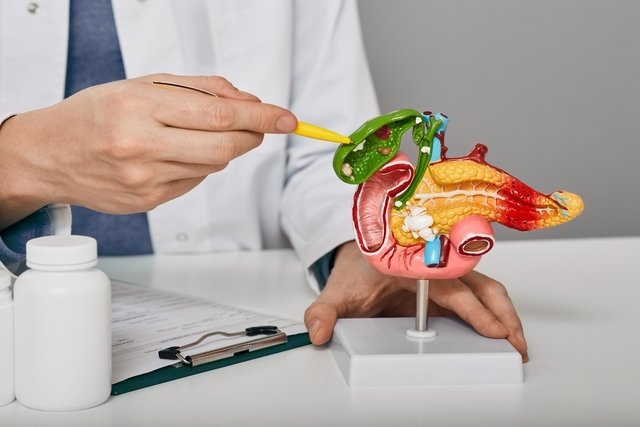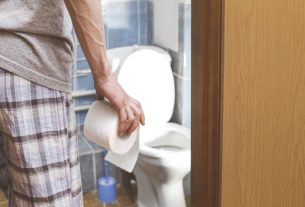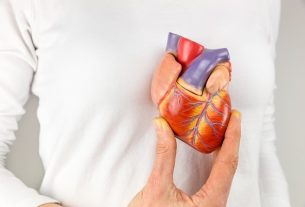Cholelithiasis is the presence of stones inside the gallbladder due to the accumulation of bilirubin or cholesterol there, which causes obstruction of the bile duct and can lead to the appearance of some symptoms, such as pain in the stomach, back, vomiting and excessive sweating. , for example.
It is important that in the presence of signs and symptoms suggestive of cholelithiasis, the gastroenterologist or general practitioner is consulted so that an evaluation and diagnosis can be made, which may involve performing an ultrasound or abdominal computed tomography.
If gallstones cannot be eliminated naturally, the doctor may recommend the use of medications that stimulate their elimination or surgery to remove the gallbladder.

Symptoms of cholelithiasis
Although in most cases cholelithiasis does not present symptoms, when stones cause obstruction of the bile ducts they can cause symptoms such as:
- Pain or cramps in the gallbladder region;
- Stomach pain that radiates to the ribs, back or rest of the abdomen;
- General feeling of discomfort;
- Nausea;
- Vomiting;
- Sweats.
Symptoms can begin about half an hour to an hour after meals or suddenly, sometimes during the night, varying in intensity and duration, with pain lasting several days.
Furthermore, the pain can be more intense and last longer when complications such as inflammation of the gallbladder, bile ducts or pancreas occur, and other symptoms such as fever and yellow eyes and skin may also appear. Discover other symptoms of gallstones.
Symptoms online test
To find out your risk of having cholelithiasis, select the symptoms presented in the following test:
Main causes
Cholelithiasis can occur as a consequence of some situations, the main ones being:
- Excess cholesterol: cholesterol in bile cannot be eliminated and ends up accumulating and forming gallstones;
- Too much bilirubin: happens when there are problems with the liver or blood, leading to elevated bilirubin production;
- Very concentrated bile: It happens when the gallbladder is unable to eliminate its contents correctly, which makes the bile very concentrated and favors the formation of gallstones.
These situations can occur as a result of obesity, a sedentary lifestyle, a diet rich in fat and diabetes, and can also occur due to cirrhosis or the use of some medications, such as contraceptive pills.
How the treatment is carried out
In most cases, cholelithiasis does not cause symptoms and the stones are eliminated on their own, without requiring treatment. However, when the stones are very large and become trapped in the bile ducts, treatment by a gastroenterologist may be necessary, such as the use of shock waves or gallstone medications, such as ursodiol, which help to destroy and dissolve the stone, eliminating it through feces.
Surgery to remove the gallbladder, known scientifically as cholecystectomy, is the most frequent and effective treatment, indicated when the person presents symptoms and can be done classically, through a cut in the belly, or laparoscopically, where the instruments used in surgery enter the belly through small incisions made in the belly. Check out the treatment options for gallstones.
How should the diet be
Diet is very important to treat cholelithiasis, because consuming foods with fat can worsen the symptoms of gallstones. Therefore, the person should consult a nutritionist so that they can recommend the best diet, and it is essential to avoid the consumption of foods rich in fat, such as fried foods, sausages, fatty meats and snacks.
Check out some tips on what to eat and what to avoid during gallstone treatment in the following video:
Bibliography
- Prolo, Thaiane et al. Nutritional factors in biliary disorders. Rev Fac Ciênc Méd Sorocaba. 19. 4; 167-168, 2017
- UNIVERSITY HOSPITAL – USP. Clinical and Regulatory Protocol for Biliary Lithiasis and its Complications. 2017. Available at: <http://www.hu.usp.br/wp-content/uploads/sites/176/2017/06/432_Digestiva_Pancreas_protocolo_clinico_e_de_regulacao_do_acesso_para_litiase_biliar.pdf>. Accessed on February 8, 2021
- European Association for the Study of the Liver (EASL)*. EASL Clinical Guidance Standards on the prevention, diagnosis and treatment of gallstones . Journal of Hepatology. 95. 146–181, 2016
- VIRTUAL HEALTH LIBRARY OF THE MINISTRY OF HEALTH. Gallstones (gallstones). Available at: <https://bvsms.saude.gov.br/dicas-em-saude/2910-pedra-na-vesicula-calculo-biliar>. Accessed on February 8, 2021
- SANTOS, Jefferson. Acute cholecystitis. Creation of a Manual to guide initial propaedeutics for Acute Abdomen in the Emergency Department of Hospital Geral de Fortaleza., 2018. Hospital Geral de Fortaleza.
- BVSALUD. DIFFERENTIAL DIAGNOSIS OF OBSTRUCTIVE JAUNDICE IN THE EMERGENCY. Available at: <https://docs.bvsalud.org/biblioref/2018/04/882609/diagnostico-diferencial-da-ictericia-obstrutiva.pdf>. Accessed on February 8, 2021

Sign up for our newsletter and stay up to date with exclusive news
that can transform your routine!
Warning: Undefined array key "title" in /home/storelat/public_html/wp-content/plugins/link-whisper-premium/templates/frontend/related-posts.php on line 12
Warning: Undefined array key "title_tag" in /home/storelat/public_html/wp-content/plugins/link-whisper-premium/templates/frontend/related-posts.php on line 13




